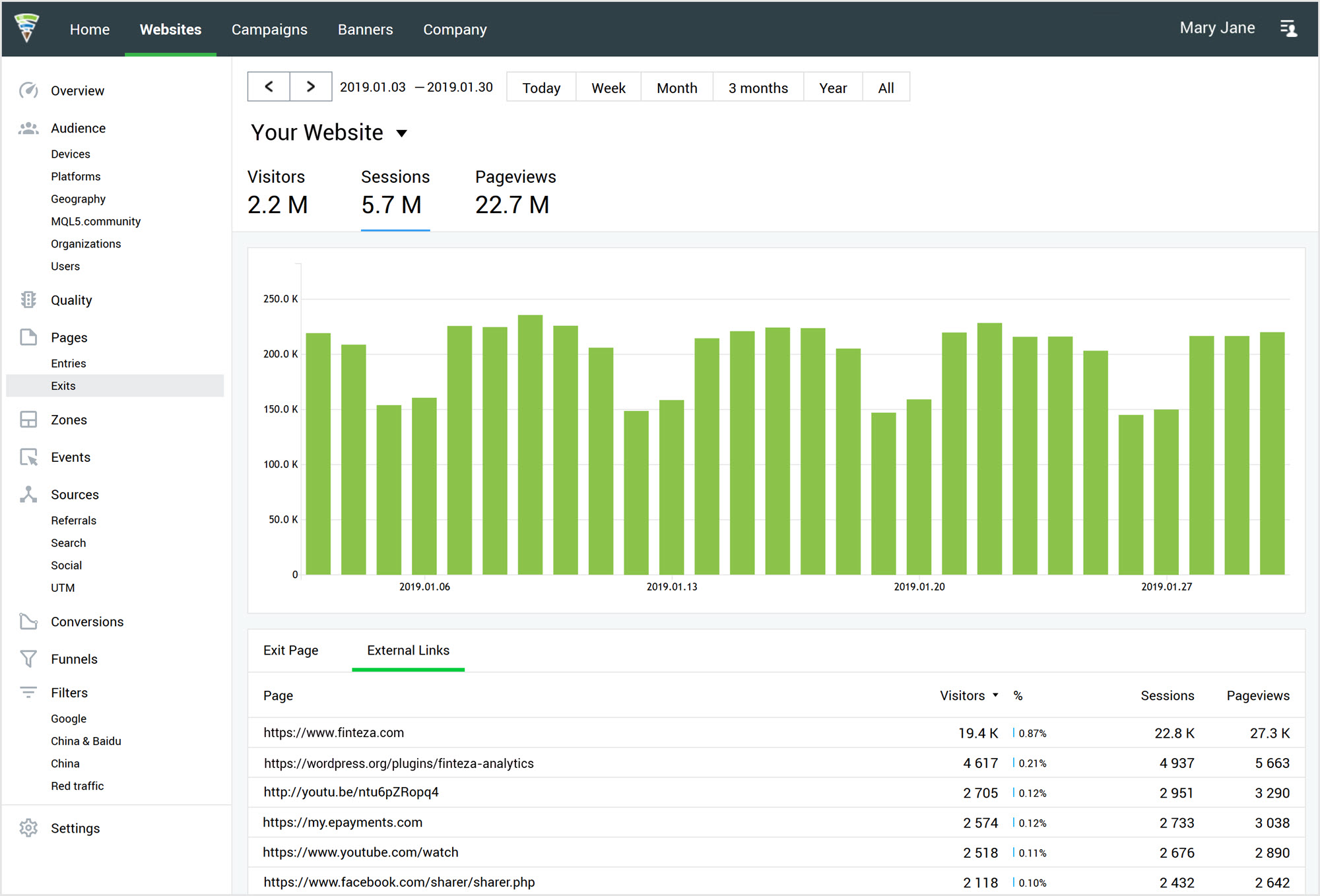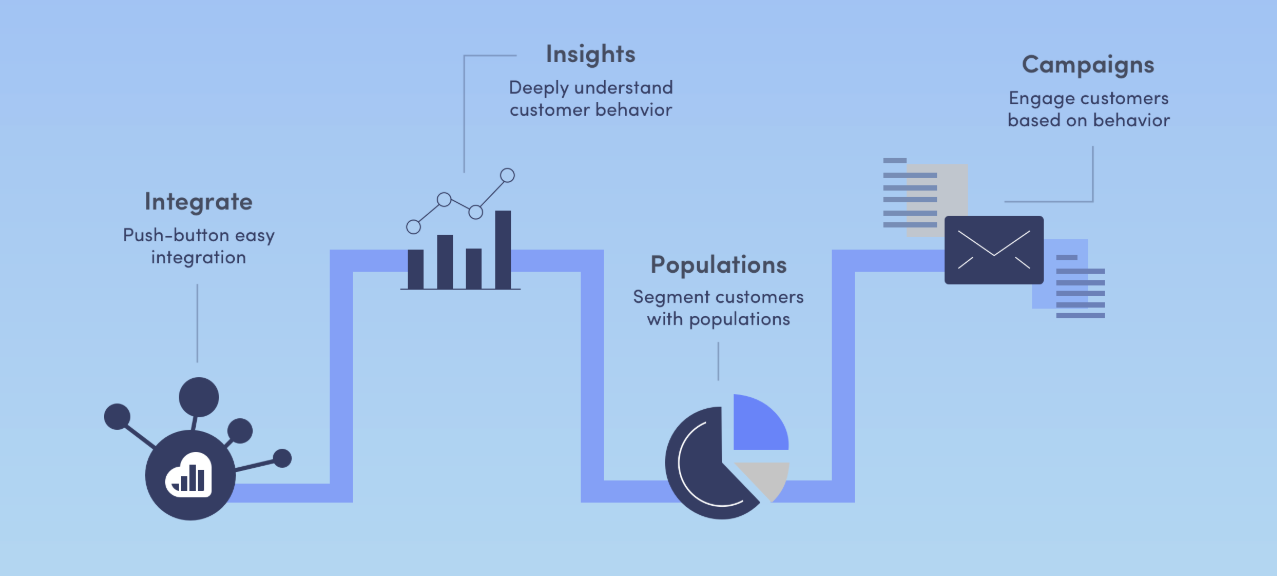Sales funnels form the backbone of just about every company you’ll make a purchase from today, tomorrow, or all year round.
For many business owners, the term “sales funnel”, otherwise known as “conversion funnel”, can sound much like self-important corporate jargon – an affectation that makes the process of selling products seem like brain surgery.
The good news is that if you’re already selling goods or services online, then you already have a sales funnel in place. Easy! Right? Well, there’s a significant difference between having a funnel for customer conversions and utilizing your website in a way that actively drives sales.
Fundamentally, a sales funnel is a term that helps you to visualize and understand how a visitor flows from your landing page into the other side of your checkout page – converting themselves into a fully-fledged customer in the process. The reason the word “funnel” is used to describe the process is that you’re aiming to guide prospective customers from your landing page towards a conversion.
There are five key elements behind a strong sales funnel. Firstly, you need to focus on raising awareness of your business and brand. You then need to transform your target audience’s awareness into discernible interest. The third element involves building desire in your product or service from interested visitors. If your sales funnel is firing on all cylinders, the desire you’ve built will then turn into a conversion. Finally, re-engagement is the pivotal ending point – which helps to lure returning customers straight back up to the top of the funnel.

Source: BigCommerce
(An effective sales funnel will not only guide visitors into making a purchase but also re-position strategically so that they feel encouraged to return to buy from you in the near future.)
Learning from your funnels
While many businesses are guilty of leading customers up the garden path, be sure to create a funnel that leads them directly to a conversion. This can be done by carefully crafting your pages in order to encourage a sale, from call-to-actions to alluring offers – if your pages can spark audience interest then your sales funnel will be looking good.
One problem that a surprising number of marketers suffer from is their failure to understand that people are complex creatures and that it is fairly difficult to shepherd them into spending their money. This means there will never be a one-size-fits-all solution when creating effective sales funnels, and the best course of practice is for businesses to get into the minds of their target audience.
How old will our most dedicated customers be? What sort of language will they respond to? How persuasive can we be without running the risk of alienating them?
Audiences are difficult to predict. A punchy and slang-laden call-to-action may work with customers under 25, but this could represent just five percent of your prospective following. Be sure to connect with your target audience in a way that will inspire them to make a purchase.
Time is money, and it certainly pays to be proactive. But setting up a sales funnel that’s reactive enough to adapt to customer demands can certainly work wonders in maximizing your sales moving for the foreseeable future.
Sales funnels are great tools to conduct a little trial and error. Be sure to monitor the key pages that customers would visit during their path towards completing a purchase, and keep a watchful eye for weak links.
There are plenty of analytical approaches towards monitoring the success of your sales funnels, but one of the most effective methods is also the most simple. Keep an eye out for the level of traffic your pages receive. It’s logical that as you peer deeper into your sales funnel, the traffic will drop. From your catalog page to your item description page, to your checkout page, all the way through to your completed purchase page; expect to see fewer visitors and lower click-through levels. However, if a link between one step and another represents something of a cliff-edge in terms of visitor figures, it’s worth rethinking your approach. If masses of visitors decide to leave at a specific stage in the conversion process, it’s logical that you’ve failed to appeal to them effectively enough.

Source: Google Analytics
The value of returning customers
Sales funnels can also tell you a lot about the type of customer you attract. Sometimes marketers are also guilty of failing to differentiate between new customers and returning customers. Your sales funnel could be brimful of exciting offers for fresh-faced new visitors, and mailing list incentives too – but these measures aren’t going to do too much for long-serving customers looking for a fresh reason to jump back down the rabbit hole of your funnel.
Again, the effectiveness of your appeals to new and existing customers alike can be analyzed at varying depths, depending on the tools you have at your disposal (said tools will be explored later).
The value of the returning customer certainly can’t be underestimated. They’ve already gone to the trouble of coughing up for your goods or services so it can be assumed that they’re better placed to shoot through your funnel and make a purchase again.
The industry-wide emphasis on attracting new blood into a sales funnel can risk leaving existing customers feeling alienated – and is a particularly common oversight when it comes to businesses offering services.
Returning customers have little reason to be exposed to your glowing company testimonial page (even if the five-star review you received two weeks ago feels worthy of hanging up on the office wall), they’ve already experienced your sales process and enjoyed it enough to revisit your site.
If you see that there are considerable numbers of returning customers on to your homepage but very few completing purchases in relation to new visitors, it could mean that your sales funnel isn’t structured to be appealing enough to them.
Should your sales funnel analytics point to a need for engaging better with existing customers, consider investing fresh content that gives them a reason to get excited about your products. Regular blog posts are a great way to help keep your audience interested and engaged – whether it’s their first time visiting your site or the 301st time.
If you’re keen to level the playing field between new and returning customers, a great way of covering all bases is to utilize smart call-to-actions for your website and mailing lists. Smart CTAs are capable of displaying different information in the same space on your website’s pages, depending on a range of variables – like a visitor’s location, preferred language, membership to a mailing list or whether they’re a new or existing customer.
Tools
Naturally, there’s a wide range of tools available to help you to tap into your sales funnel performance and analyze exactly who you’re appealing to and who appears to be disinterested in your product.
SEO guru, Neil Patel, believes that Google Analytics can enable marketers to take a more organic approach in monitoring their sales funnel. By listing a range of significant pages throughout your funnel to monitor, Google Analytics can tell users exactly where potential customers lose interest as well as quantifying the most effective pages of your site in a marketing perspective.
For a deeper, more exponential scrub of exactly how well your sales funnel is performing, using tools like Finteza can help. The tool allows you to register events like account registration, email subscription, and purchases, carry out behavioral analysis and see the final drop-off point.

Source: Finteza
(Image above shows Finteza’s “Exits” section that illustrates where sessions are completed and which external link has caused the exit.)
Such tools enable you to essentially visualize your funnel, whilst regular reports can keep you fully aware of its performance long into the future.
When it comes to analyzing exactly what makes returning customers tick, the insight provided by Kissmetrics takes some beating. With intuitive visualizations and customer retention analysis, Kissmetrics makes for a formidable tool in shaping a winning sales funnel.

Source: Kissmetrics
Remember, audience behavior can be tricky to predict. You might think that your sales funnel is entirely leak-free, but with the support of competent analytics, you’ll be capable of tending to any structural weaknesses in a flash before your custom starts to fall away. There’s nothing wrong with a little trial and error in marketing and with the right data behind you, it’s safe to assume that there’ll be a lot more instances of trial and success when it comes to your conversion rates.
The post Converting custom: Using analytics to optimize sales funnels appeared first on Search Engine Watch.
from Search Engine Watch https://ift.tt/2y51tN3
Comments
Post a Comment